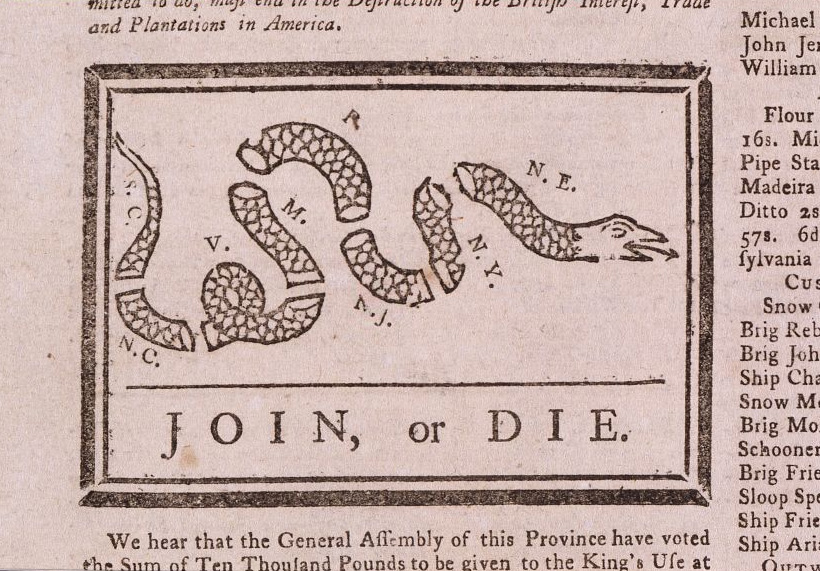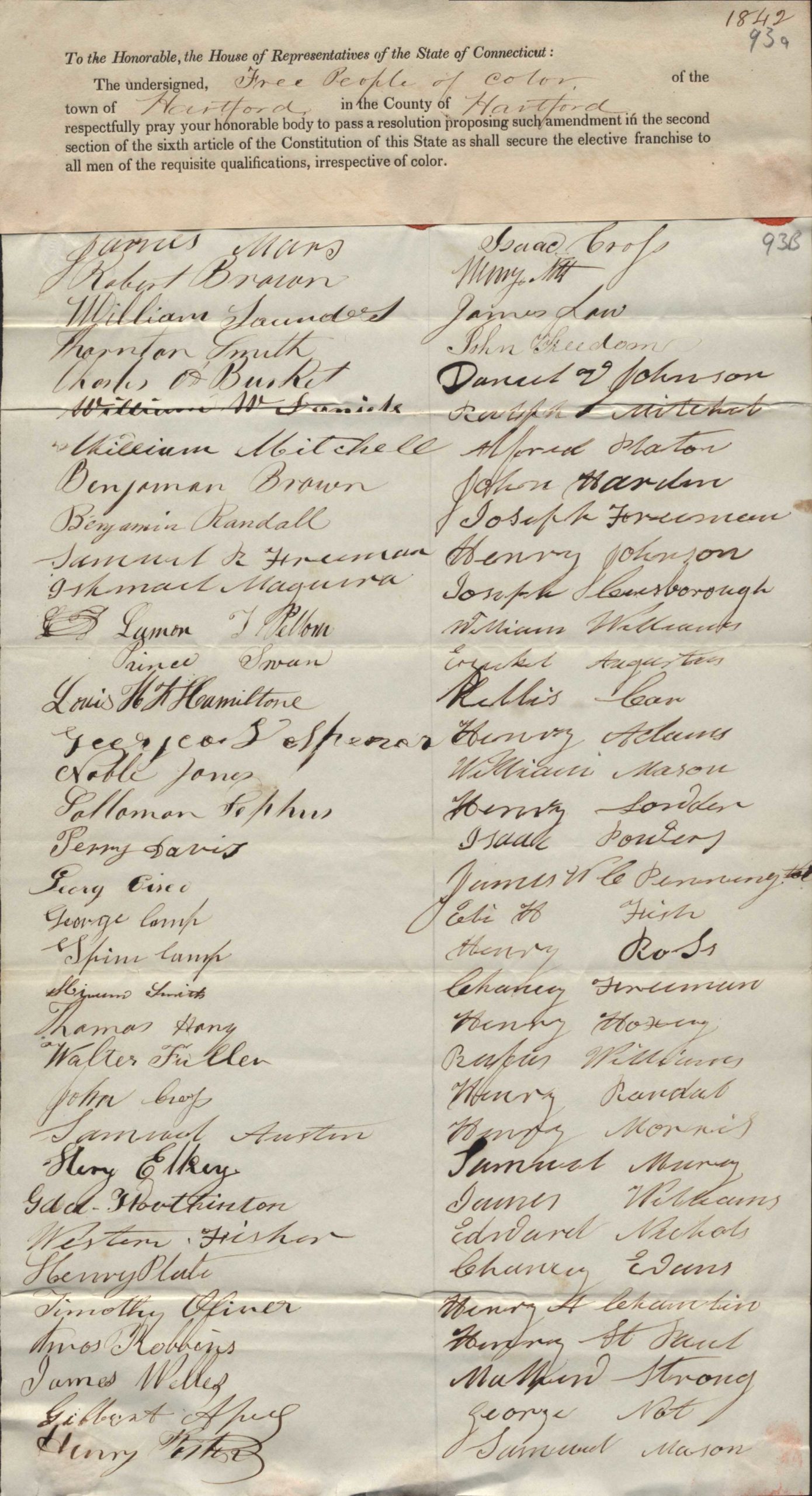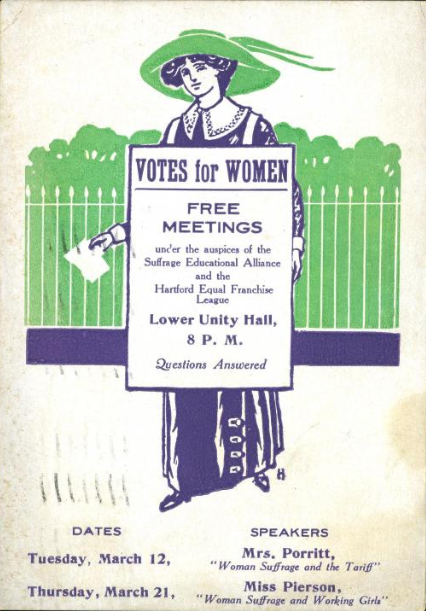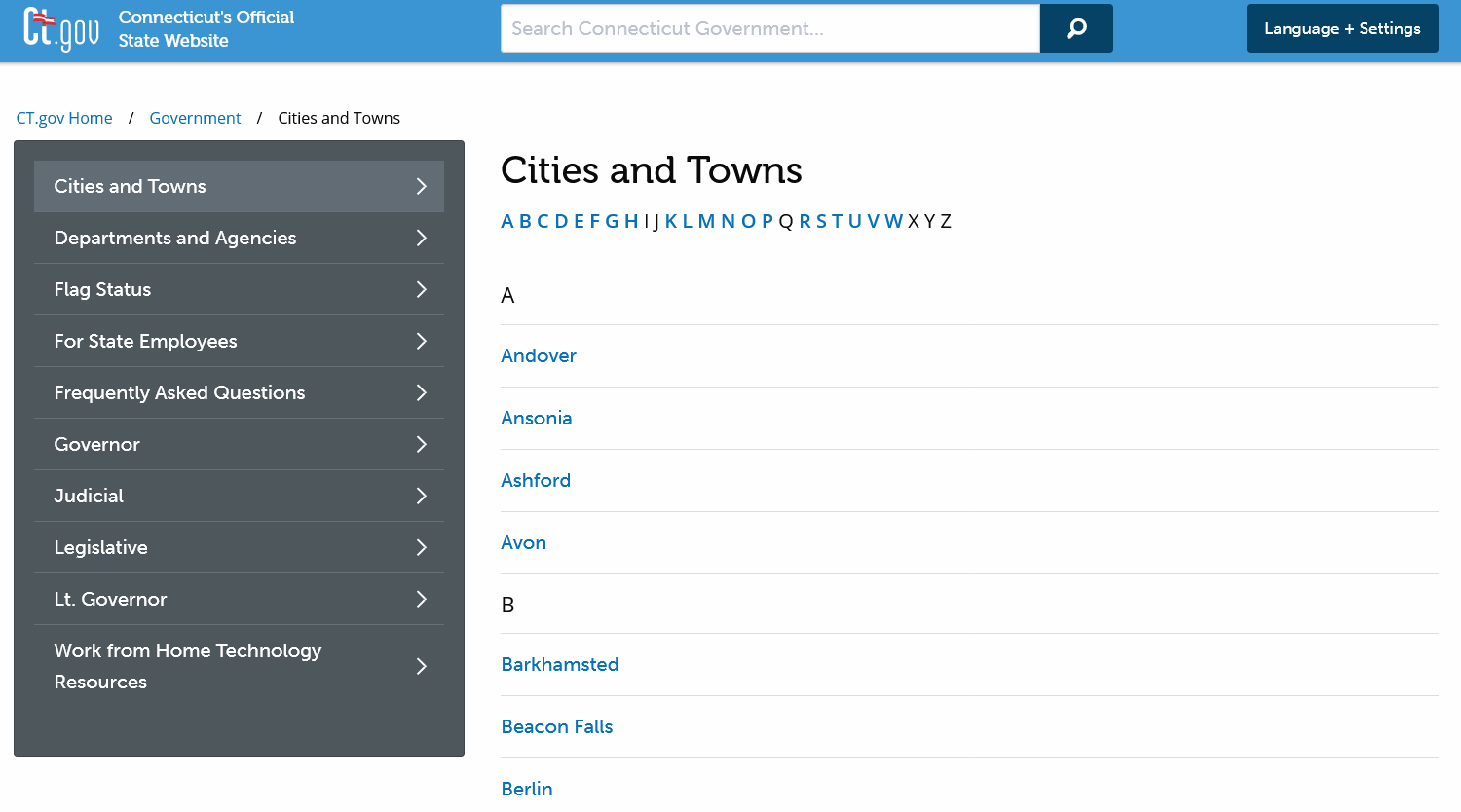Elaine Temel and Brian Cofrancesco
The Connecticut Democracy Center at Connecticut’s Old State House
TEACHER'S SNAPSHOT
Subjects:
African Americans, Civic Engagement, Civics, Civil Rights, Politics & Government, Rights & Responsibilities of Citizens, Voting & Suffrage, Women's Rights
Course Topics/Big Ideas:
State Constitution and Government, The United States Constitution and Civic Participation
Town:
Hartford, New Canaan, New Preston
Lesson Plan Notes
Our government is a democracy in progress, influenced by the wants and needs of its people. For democracy to work, all people must feel that their voices are important. Students, no matter their age, must be empowered to participate in and strengthen our democracy.
This activity challenges students to find their “civic voices” and use them as agents of change in local and state government. Students will build background knowledge by exploring historic examples of people using their voices to speak out about important issues in their communities. They will learn about civic leaders today and their roles in government and how laws are made in Connecticut. Students then will use their own “civic voices” to create positive change.
ESSENTIAL QUESTION
SUPPORTING QUESTIONS
- What is the structure of our local and state government and how does that influence change?
- What forms of action can civic participation take?
- How have individuals in local, Connecticut, and United States history used their “civic voices” to come together in order to create change on an issue they cared about?
- In what ways can students use their own “civic voices” to take action in local and state government?
ACTIVITY
- Introduce the compelling and supporting questions.
- Explain that this inquiry activity is an opportunity for students to find their “civic voices” and use them effectively in their community to influence change in local and/or state government.
- Students will review and share their knowledge of the structure of local government and the three branches of state government. Teacher will introduce the names, positions, and photographs (if possible) of specific elected officials who represent the students in local and state government.
- As a class or in groups, students will brainstorm problems or community issues important to them and other kids today. Problems may be related to: people in need, the environment, animals, schools, recreational opportunities, etc.
- Students will explore issues important to people in the past and discover how they used their voices to make change. They will use the Library of Congress Primary Source Analysis Tool worksheet to examine (“Observe”), respond to (“Reflect”), and discuss (“Question”) one or more of the primary sources in the Tool Kit.
- Students will discuss ways that people used their “civic voices” in the past and how people might use their “civic voices” today. Answers may include: writing to elected officials, voting, studying politics, protesting, demonstrating, writing a letter to their local newspaper, writing petitions, testifying on proposed local or state legislation, hanging signs in their community, being involved with community organizations, community service, etc.
- Students will revisit the compelling question.
OPPORTUNITIES FOR ASSESSMENT
- Individually or in groups, students will select a present-day issue they want to see changed in their community or our state. Students will research their chosen community issues in order to identify: root causes, the prevalence of the problem in their community or our state, and actionable ways to make an impact on the problem.
- Students will choose an elected official who represents them in local or state government and write a persuasive letter to encourage action related to their identified problem. The letter should summarize their ideas, share their research, and explain what action they want the official to take related to the specific issue. Students will share responses they receive with their teacher and class. For guidance, see “Writing to Your Elected Officials” on the Kid Governor® Website.
RESOURCE TOOL KIT

Franklin, Benjamin. Join or Die. United States, 1754. Library of Congress.

Petition of the “free People of Color of the town of Hartford” to the General Assembly to recognize voting rights for all men, regardless of color. May 1842. State Archival Record Group #2, Records of the General Assembly, Box 1, Folder 16 of the African-American collection files, 1821-1869. Connecticut State Library.

“Votes for Women” postcard promoting two free meetings held by the Suffrage Educational Alliance and the Hartford Equal Franchise League. March 1912. Connecticut Museum of Culture and History.
“Teen calls for exoneration of Connecticut witches.” The News-Times (Danbury, CT), October 11, 2007.
A New Preston teenager writes to state and British legislators asking for the exoneration of her ancestor and others who were convicted of witchcraft in colonial Connecticut.
“Prudence Who? Prudence Crandall?” Record-Journal (Meriden, CT), November 28, 1994. Courtesy of the Newspapers.com archive.
New Canaan fourth graders petition the Connecticut General Assembly to make Prudence Crandall Connecticut’s State Heroine.

Library of Congress Primary Source Analysis Tool

Links to Connecticut’s city and town websites from Connecticut’s Official State Website
ADDITIONAL RESOURCES
Places to GO
Connecticut’s Old State House, Hartford: Located in the heart of Hartford, Connecticut’s Old State House served as a home to all three branches of Connecticut state government from 1796 to 1878. Some of our state’s most important stories of freedom, democracy, and civic action—from the Amistad and Prudence Crandall trials to the Constitutional Convention of 1818—took place at this National Historic Landmark. Students can visit with their families for a public tour, or classes can participate in virtual or in-person school programs.
Connecticut State Capitol Tours, Hartford: The current State Capitol has been in use since 1878. The building and adjoining Legislative Office Building boast the chambers where our elected officials meet and conduct the business of the state. The League of Women Voters provides guided tours for the public and school groups. The public can also visit for self-guided tours.
Things To DO
Students can read books about people who have made a difference in their community, interview family members, and/or brainstorm people they know who use their “civic voice.”
Find a book to read to your students or one for them to read independently in the Kid Governor® Library. The Library is a curated list of civics books that enable you to link reading and civics. The books are organized into three topic areas: Government, Elections & Voting; Leadership; and Civic Engagement.
Websites to VISIT
Connecticut’s Kid Governor®. Download the free Toolkits for lessons and activities about the three branches of state government and how they work, voting, leadership, identifying important community issues, and taking civic action. The resources are geared towards fifth graders but can be modified for younger students.
Kid Governor®: Student Action Resource Center. Tools and resources that guide kids from identifying community issues to taking informed civic action.
Kid Governor®: Writing to Your Elected Officials
ConneCT Kids. Kid-friendly information about Connecticut history, government, and more.
Connecticut General Assembly’s Find Your Legislators tool
USA.gov’s How to Contact Your Elected Officials
State, Local, and Tribal Governments | USAGov
State and Local Governments | iCivics
Connecticut General Assembly’s Bill Information Search. Search for current and past proposed state legislation. Navigating this tool will require teacher assistance!
Articles to READ
ConnecticutHistory.org:
- “James Mars”
- “Prudence Crandall”
- “Votes for A Woman: Sara Buek Crawford” by Kathleen Motes Bennewitz
- “19th Amendment: The Fight Over Woman Suffrage in Connecticut”
- “Witchcraft in Connecticut” by Andy Piascik
State and Local Government | The White House
“Meriden student becomes ambassador for literacy.” Record-Journal, September 21, 2019.
“Kid Governor’s campaign reminds pet owners that ‘heat kills’.” Jill Dion. Milford Mirror, June 9, 2017.



